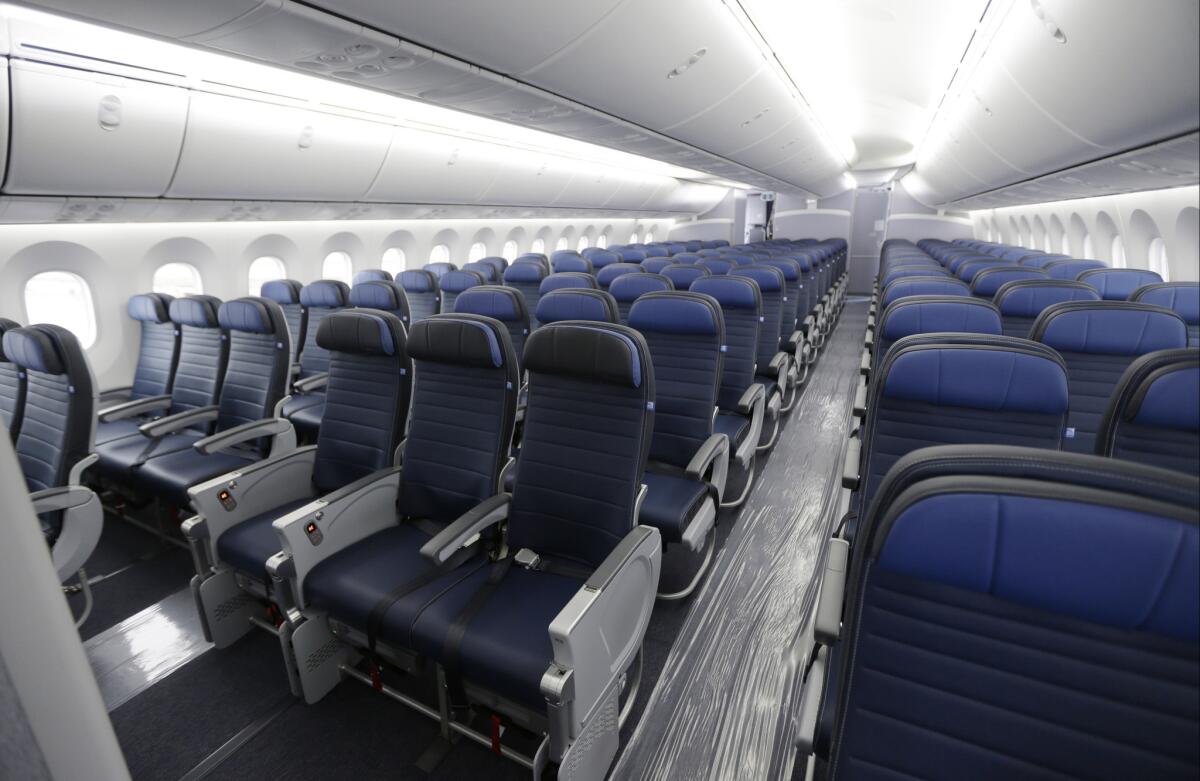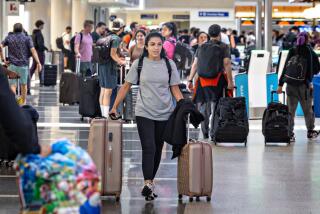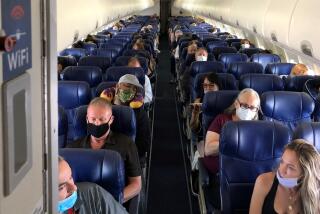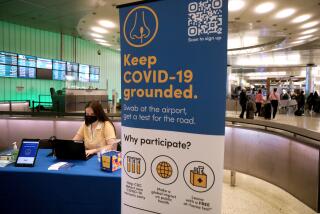Coronavirus protection on planes: Avoid eating, keep cleaning

- Share via
SAN FRANCISCO — If you must fly during the coronavirus outbreak, how might you protect yourself?
Don’t eat on the plane.
That’s one of the tips suggested by Dr. Barbara Ferrer, director of the Los Angeles County Department of Public Health, at a recent news conference:
- If it’s a short trip, consider not eating. When you eat, you often put your hands in your mouth. And if your hands have touched a virus-infected surface, such as the seat tray, you don’t want to be putting your unwashed hands in your mouth.
- Wipe down the area where you’re sitting on a plane. Bleach-based wipes and solutions with at least 60% alcohol can kill the coronavirus.
- Wash your hands frequently. Scrub for at least 20 seconds with soap, remembering to lather the backs of the hands, between the fingers and under the nails.
- Use hand sanitizer — with at least 60% alcohol — frequently. Hand sanitizer is helpful when you can’t wash your hands, but it doesn’t work on all types of germs.
- If you’re seated next to a person actively coughing, ask to be relocated.
- Under all circumstances, stop touching your face with unwashed hands.
The Centers for Disease Control and Prevention said airline crew should report to the CDC any traveler who has had a fever for more than 48 hours or has a fever and one of the following symptoms — cough, difficulty breathing or an obviously unwell appearance.
Any such passengers should be moved as far away as possible from other passengers and crew, ideally by at least 6 feet — the maximum distance that virus-studded droplets from a person’s cough or sneeze can travel before falling to the ground.
The flight crew should then offer a face mask if available and if the passenger can tolerate it. If not available, the sick person should be asked to cover their mouth and nose with tissues when coughing and sneezing, the CDC said.
In past pandemics, flight crews were not always aware of federal guidelines. During the 2009 H1N1 flu pandemic, flight attendants did not follow those guidelines on a number of flights taken by Times journalists; some crew members said they had no masks to offer.
This coronavirus can be given to other people through the saliva of an infected person being coughed or sneezed into the wet areas of a person’s face, like the eyes, nose or mouth.
It can also be transmitted through a person using their hands to touch an infected surface, like droplets of saliva coughed onto a seatback pocket, and then touching their face with their unwashed fingers.
More to Read
Sign up for Essential California
The most important California stories and recommendations in your inbox every morning.
You may occasionally receive promotional content from the Los Angeles Times.











